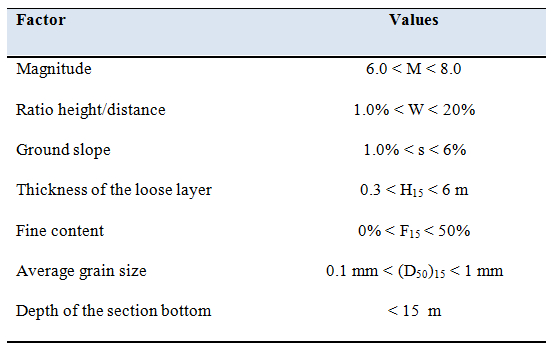The loss of resistance in granular saturated soils due to the phenomenon of liquefaction is the cause of large horizontal deformations of the ground.
Lateral spreading consists of a lateral movement of large ground blocks above the liquefied level, which occurs when are shared flat or gently sloped soils (0°-3°) of alluvial materials.
The top layer will fracture into blocks and the material that constitutes the lower layer (liquefied) goes to fill the fractures.
The fractured soil moves laterally toward the free surface with even metric displacements.

Figure 7- (a)Liquefaction of soil with lateral movement, (b) movement with advancement front
Bartlett and Yound (1995) have obtained two independent models for the estimation of Lateral spreading (valid for (N1)60 less than 15 or for a distance from the source under 30 Km):
-Model with flat surface for areas near the banks
![]()
- Model with inclined surface for areas with slightly inclined soils
![]()
where:
Δh = value in meters of the soil lateral displacement
H15 = cumulative thickness of the saturated layers with the corrected number of blows, (N1)60, less than 15, (in meters)
(D50)15 = average size D50 of granules included in H15, in millimeters
F15 = average of fine content (fraction of sediment passing through the sieve n° 200) of the layers contained in H15
M = magnitude of earthquake
R = horizontal distance from the source of seismic energy
s = slope of the soil
W = ratio between the height of the free surface (H) and the distance between the foot of the free surface and the site considered (L)
By analyzing historical cases, the authors Bartlett and Yound (1992) have identified the variation range of the variables contained in the above equations, necessary for the occurrence of the Lateral spreading phenomenon (see Table 6).
Table 6- Range of values of the variables in the equations of Bartlett and Yound (1995)

Choosing the command "Lateral spreading", entering the required input data and clicking the "Computation" button the software calculates the lateral displacement using the computation models described above.
The button "Report" offers the possibility to print theoretical content, a summary of input data and the results.
© Geostru